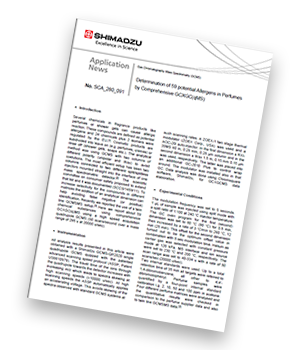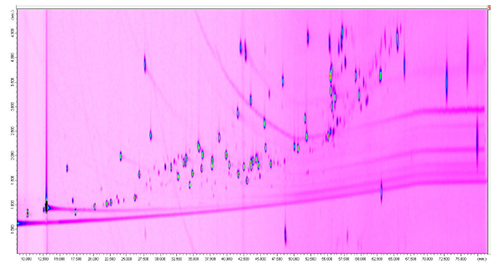This application note provides detailed GCxGC analytical conditions and columns for the effective separation and quantitation of 59 cosmetic allergens in cosmetics and personal care products.
 Allergic reactions to cosmetics, including personal care products, is on the rise. The most common triggers are found to be preservatives and fragrance chemicals. Several such allergens have already been identified, restricted and even banned for use in cosmetics. However, with the complexity of leave-on and rinse-off cosmetics and the chemical nature of these allergens, the analysis and quantitation of allergens posed a challenge for many testing laboratories and regulators.
Allergic reactions to cosmetics, including personal care products, is on the rise. The most common triggers are found to be preservatives and fragrance chemicals. Several such allergens have already been identified, restricted and even banned for use in cosmetics. However, with the complexity of leave-on and rinse-off cosmetics and the chemical nature of these allergens, the analysis and quantitation of allergens posed a challenge for many testing laboratories and regulators.
In this article, a total of 59 cosmetic allergens, including confirmed and potential allergens, are efficiently analyzed using the comprehensive GCxGC setup with a single quadrupole MS. With this setup involving two columns of different polarity, it allows the separation of possible overlapping peaks and avoids false negative and positive identification. Real perfume samples were quantitatively analyzed using the described setup at high acquisition speed and results were accurately determined and closely similar to the actual quantity provided by the perfume supplier.
Contour Plot of Allergens (Standards at 50ppm), Data analyzed using Shimadzu Chromsquare comprehensive software.
Download this application note...
- Find out the detailed GCxGC analytical conditions and columns for the effective separation and quantitation of 59 cosmetic allergens in cosmetics and personal care products
- Understand how the comprehensive GCxGC setup could reveal compound structure information for qualitative analysis.

